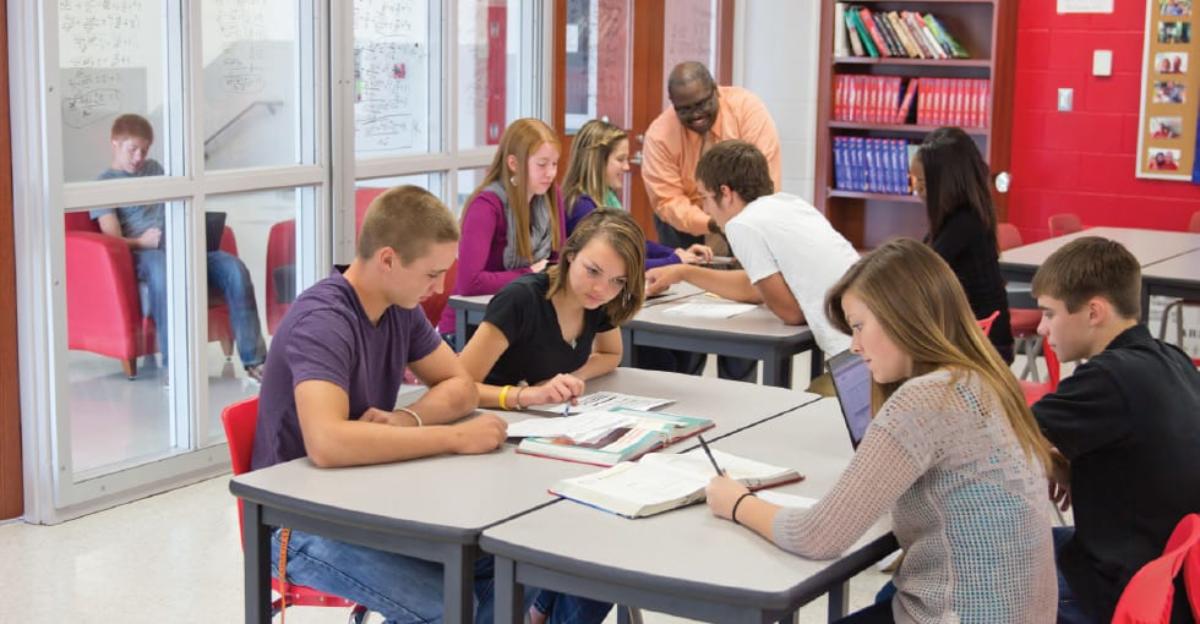For more than a century, students learned in rows of desks that were only able to face one way: toward the teacher. That teacher would stay at the front of the room in an effort to make learning as rigid as possible. Not only did this approach do nothing to improve discipline (the primary goal), but it stifled creativity.
Thankfully, both the next generation of learning standards and recent studies have shown that students need to collaborate with their teacher and themselves. It’s a more effective way of learning, and it also prepares them to contribute to the modern, global economy.
The benefits of collaboration include:
- Enhanced communication skills, crucial when collaborating on a global scale during a career.
- Today’s most sought-after companies are all built around flexibility, brainstorming, and multi-modal ways of work.
- Engaging all students in ways in which they work best, rather than a singular approach that might not work for everyone.
What collaboration looks like
More recently, teachers would organize students into small groups of 3-5 to spur collaboration. The problem with this approach was that it didn’t really reflect how collaboration actually appears in the workplace. Sure, you might have a team with which you do most of your work, but you also have to interface with other departments in other places.
Today’s classroom of collaboration allows for a similar idea. Collaboration isn’t just with the people who happen to be sitting next with you. It might be with another student who has experience in a topic you are currently studying, or a potential cross-curricular project with someone in a different class.
How can a classroom help?
This kind of learning environment simply isn’t possible in inflexible rows of desks. Instead, various desks and seating need to be available to fit the shifting needs of the work being done in the room. These pieces need to be able to move around to facilitate collaboration among all students, not just the ones sitting near each other. Tasks requiring everything from the whole group to an individual student can be accommodated.
The good news is this ideal classroom is easily achievable with the right tools. Then, all it takes for students to truly be engaged in a 21st century education is the creativity of a talented educator.






Leave a Reply